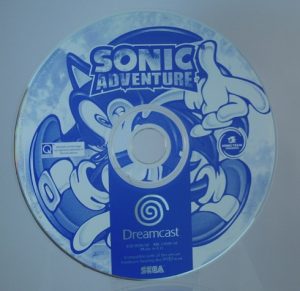History (1999): GD-ROM
1.2GB optical disc format developed by Yamaha for Sega arcade machines
This is a Press Release edited by StorageNewsletter.com on October 25, 2018 at 2:17 pmThis article was published by the Museum of Obsolete Media.
GD-ROM (1999-)

GD-ROM (Gigabyte Disc Read-Only Memory) is an optical disc format developed by Yamaha for the Sega Dreamcast game console, as well as some Sega arcade machines.
The Dreamcast was the first sixth-generation video game console, preceding the PlayStation 2, Xbox and GameCube. The Dreamcast was initially successful in the US, but interest declined as hype around the launch of the PlayStation 2 increased. Sega suffered significant losses, discontinuing the Dreamcast in 2001 and withdrawing from the video game console market.
Although very similar to a CD-ROM, it offers 1.2GB storage capacity, almost double that of a CD-ROM. It also offered greater protection against piracy, and it avoided having to pay royalties to the DVD Forum.
The decision not to go with DVD technology was cited as one reason for the failure of the Dreamcast console.
There are different areas on a GD-ROM disc. The first is in conventional CD format, and usually contains an audio track with a warning that the disc is for use on a Dreamcast, not an ordinary CD player. This section can also contain data readable in PCs. After a separator track, the final (outer) area of the disc contains the game data itself in a higher density format. This section is 112 minutes long, with a data size of 1.2GB.
The greater storage capacity is achieved by decreasing the speed of the disc to half and by letting the standard CD-ROM components read the more closely packed pits at the normal rate thus nearly doubling the disc’s data density.
The Dreamcast was discontinued in 2001, but the GD-ROM continued to be used in various Sega arcade machines.














 Subscribe to our free daily newsletter
Subscribe to our free daily newsletter


